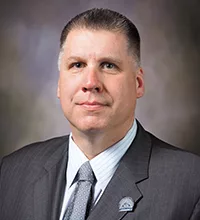Last month’s column dealt with issues I was having with small packaged residential air-cooled chillers. I wrote about a project where I replaced a packaged chiller with a split system AC condenser connected to a standard chiller barrel in the basement. At the time I wrote the column, it had only been running for a couple of weeks and I indicated that I would update my readers in the next column.
The chiller system has been operating now for eight weeks with no breakdowns or call-backs. We will continue to use this set-up on our future chilled water cooling systems. I like the fact that we have complete control of the quality of the components specified as well as the quality of piping, wiring and overall workmanship of the system.
Wrong chimney cap
Approximately five years ago, we installed a simple radiant and DHW system in a small single-story detached in-law apartment for a client in Oakton, Va. The mechanical system featured a 50k BTU/hr. Lochinvar Knight modulating, condensing gas boiler, a 30 gal. HTP Super-Stor DHW tank, and two zones of Uponor radiant floor heating in a slab on grade application. Cooling is handled by a Mitsubishi ductless split system with an outdoor unit and two wall mounted cassette indoor units.
This is a one of the simplest systems we have done. There is not much to it. There are no elaborate controls, electronic devices or mixing components. Uncomplicated would be the best description. As expected, the system ran well for the first four years with no breakdowns. The only service calls were for routine cleaning and maintenance. and no hot water. The boiler was locked out on flame failure. Multiple calls were run.
Then, over the past year, the “no-heat” calls started. They were all the same: No heat, we would clean the flame sensor. After several call-backs, we then replaced the flame sensor.
We would re-start the boiler, perform a combustion test, and declare it fixed. After a week or two of flawless performance, we would receive the dreaded call: Off on flame failure lock-out again. The tenant soon learned how to reset the lockout but that would only provide temporary relief. Soon, it would lock out again.
I even went there myself a couple of times to try to diagnose the problem. Both times, I cleaned a very dirty flame sensor and restored heat and DHW. It would run fine for a week or two, or in some cases over a month but inevitably it would lock out again. The boiler demons got me again!
What could possibly be causing this problem? We have installed hundreds of condensing boilers over the past 10 plus years. Sure, some have given us issues but we were always able to eventually solve the problem. Was it the boiler? I have to admit this crossed my mind but we have several dozen of this exact same model installed and they were not having these problems.
I received phone calls from both the tenant and the owner at the same time last week. I got an earful from both alternately as one or the other was on hold. They had enough with the cold showers and boiler resets. I sent my ace tech, Brian Golden, to the site and told him, “Don’t leave until it is fixed.”
After a detailed investigation, Brian located the problem as I knew he would. What he found was astounding, as it never occurred to me to even check for this. A little over a year ago, roof work was done on the apartment. The roofer must have removed the concentric vent termination and lost it. He replaced the OEM PVC termination with a PVC bushing and a B-vent termination. While this may have looked good, it caused problems with the boiler combustion. Brian had a new concentric kit delivered and replaced the roofer’s work with the correct termination.
The jury-rigged termination caused two problems. First, when it rained, water and moisture would get into the combustion air intake. The second, more damaging issue was that this set-up allowed for flue gas recirculation under certain conditions. This is what was causing the flame sensor to corrode and scale up so quickly. The incomplete combustion also caused the heat exchanger to foul up.
Why didn’t I catch this when I was there? Why didn’t my other techs catch this? Quite simply, it never occurred to me to check the vent termination. I knew we installed the system and the vent pipe termination was installed to manufacturer specifications. The combustion issue did not show itself when the system was reset because the tank was always cold and/or the house was cold. The system would ramp up to high-fire and the combustion parameters would check out. Even with the wrong termination, when the boiler was on high-fire, the combustion air was thrown far enough away from the intake so as to not be recirculated.
It was only after packing up and leaving, as the temperature approached set point, that the modulating draft motor would spool down and the flue products would gently waft out of the vent. If the air was still or the breeze was just right, the flue products would get sucked right back into the intake causing our problem.
After Brian installed the correct termination, cleaned and vacuumed the heat exchanger and replaced the flame sensor, he performed a combustion analysis with his Testo 325 and printed a file copy. The numbers were dead on and DHW was restored. This was about six weeks ago and so far, all is well.
This job taught me to be vigilant and look at everything before drawing conclusions. Never assume that the way you left a job is the way you will find it when you return. And before you blame the manufacturer, you better check to make sure you are right before calling the local rep. I sure am glad I sent Brian to this one before I made that call.
P.S. To update, as expected, the roofer denied making this change and I have yet to be paid.
Dan Foley is president and owner of Foley Mechanical, Inc. based in Lorton, Va. FMI specializes in radiant, hydronic and steam systems as well as mechanical systems for large custom homes. He can be reached at 703-339-8030, [email protected], or www.foleymechanical.com.





